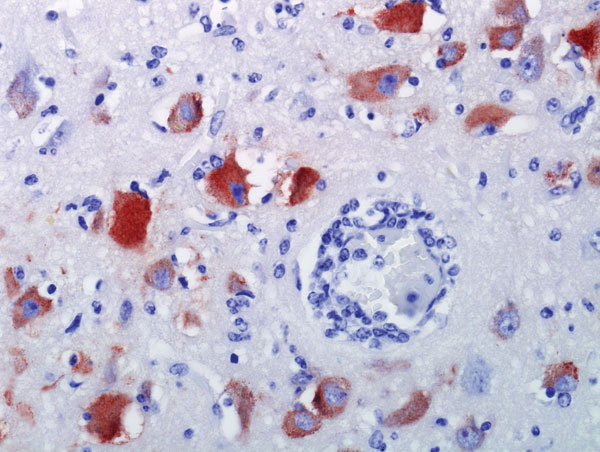Volume 17, Number 8—August 2011
Dispatch
West Nile Virus Infection in Killer Whale, Texas, USA, 2007
Figure

Figure. Brain specimen from killer whale (Orcinus orca) with West Nile virus infection that died at a marine park, San Antonio, Texas, USA, 2007. Neurons and glial cells demonstrate abundant intracytoplasmic West Nile viras antigen. Blood vessel demonstrates mild vasculitis and perivascular lymphocytic infiltrate. Original magnification ×200.
Page created: August 15, 2011
Page updated: August 15, 2011
Page reviewed: August 15, 2011
The conclusions, findings, and opinions expressed by authors contributing to this journal do not necessarily reflect the official position of the U.S. Department of Health and Human Services, the Public Health Service, the Centers for Disease Control and Prevention, or the authors' affiliated institutions. Use of trade names is for identification only and does not imply endorsement by any of the groups named above.